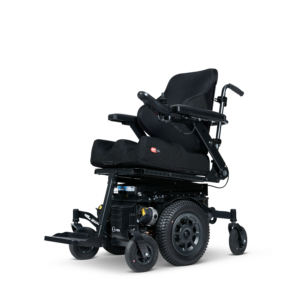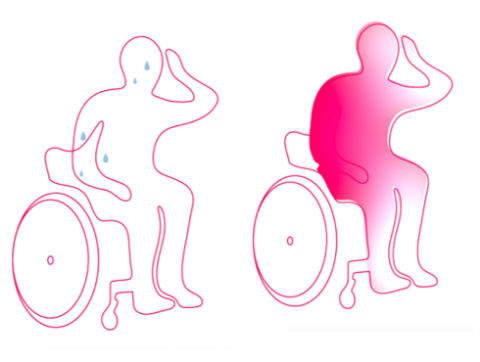
Heat and Moisture build-up: the impact on skin tissue
Microclimate is “the temperature, moisture (relative humidity) level and airflow at the skin/support surface interface”. Skin microclimate changes throughout the day according to the environmental conditions and movements surrounding it. The body and our behaviour helps manage microclimate by sensing and making adjustments to aid the processes of heat and moisture exchange to make us feel more comfortable and maintain healthy skin. This is more difficult to achieve when you have a physical/neurological condition and/or reduced mobility.
Microclimate is significantly affected when objects or support surfaces (such as seating systems) are against the skin.
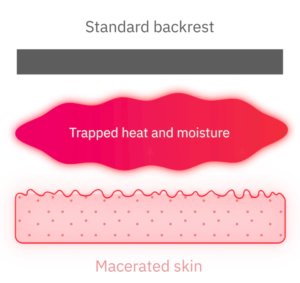 |
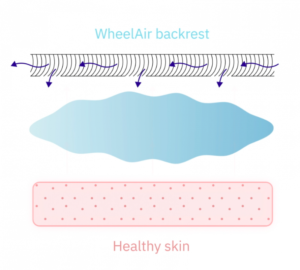 |
The ideal skin temperature is 32˚C, however, when sitting against a normal backrest the skin temperature rises 2.2˚C on average within 30 minutes. Tests show that the temperature of a backrest can increase from 23˚C to 34˚C in 100 minutes, creating lots of unwanted heat and moisture.
Airflow cooling in action
The support surface impedes airflow and processes of heat and moisture exchange, such as conduction, convection, and evaporation. As a result, there is rapid build-up of heat and moisture at the skin and seat surfaces. Increased temperature raises metabolic demand, and increased moisture leads to maceration of the skin. These factors combined affect the skin’s physiological resilience, exposing it to the risk of damaging forces such as pressure, shear and friction. Macerated skin can be recognised as pink or white surrounding skin with non-uniformly distributed redness at the centre. Due to the moisture, the macerated skin in contact with a solid surface equals a higher coefficient of friction. Friction leads to skin shear, which leads to tissue ischemia and localised tissue necrosis. The combination of high pressure over bony prominences and a decrease in skin tolerance due to the microclimate makes the ischial tuberosity (IT) and sacral regions most prone to pressure ulcer development.
Room temperature: 22˚C
Backrest temperature T0: 22˚C
Subject: Male
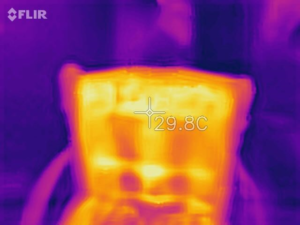 |
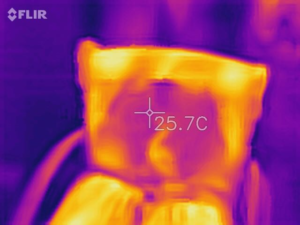 |
| WheelAir OFF | WheelAir ON |
| Temperature at T0: 22˚C Temperature at T10: 29.8˚C Temperature +7.8˚C |
Temperature at T10: 29.8˚C Temperature at T20: 25.7˚C Temperature -4.1˚C |
Prevention
From a clinical perspective, it is important to consider temperature control when issuing seating. The National Pressure Ulcer Advisory Panel of Australia recognises the impact of promoting a healthy microclimate and gives the following guidelines for seating:
- “1. Consider the need for additional features such as ability to control temperature when selecting a support surface.”
- “1.1. Consider the need for moisture and temperature control when selecting a support surface cover.”
The skin microclimate (temperature, humidity and airflow next to the skin surface) is an indirect pressure ulcer risk factor as temperature and humidity affects the structure and function of the skin, increasing or lowering possible damage thresholds for the skin and underlying soft tissues.
Incorporating microclimate into assessment
Due to the time pressure of clinical assessment and some of the testing methods used in research, like attaching sensors to a client’s bottom to monitor skin temperature, it can be challenging to incorporate microclimate review into a postural and mobility assessment. However, there are some low-tech methods to include which can provide an understanding of a client’s microclimatic risk:
- Palpation of skin surfaces that are in frequent contact with equipment: e.g. seat, back, lateral supports, chest harness
- Look for signs of heat and moisture buildup in the client, including review with client while sitting in the equipment and direct visualization of skin where possible during mat assessment
- Utilise interview techniques to investigate underlying causes, such as use of “5 Whys,” to follow up on vague answers
The Airflow technology solution for controlling temperature and reducing moisture
Through active and controlled airflow WheelAir positively influences microclimate; reducing skin temperature and by providing the tools for heat and moisture exchange at the support surface that are otherwise occluded from such processes.
This innovation is the first temperature control system designed specifically for wheelchair seating systems to help address these problems. The system allows user controlled air ventilation to the wheelchair back and seat. By processes of conduction, evaporation and convection WheelAir helps regulate not only body temperature and thermal comfort but assists in maintaining skin integrity by reducing the risk of heat and moisture associated skin damage too by keeping skin cool and dry.
The WheelAir system integrates seamlessly into all wheelchair seating systems including sling backs, rigid backs, powerchairs, and custom moulded seating.
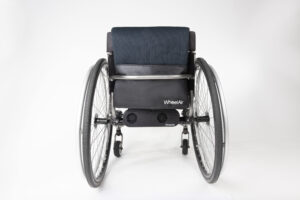 |
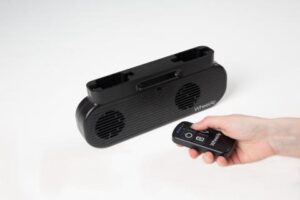 |
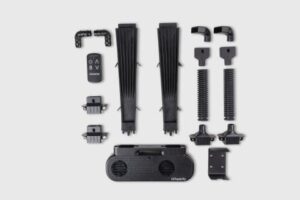 |
A little air goes a long way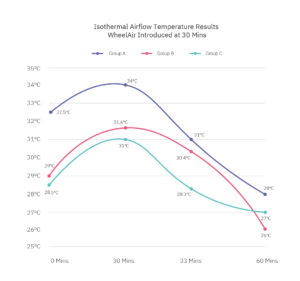
If using a normal wheelchair backrest cushion, after 30 minutes of use the user’s back temperature will on average have risen by 2.2˚C increase.
When turning the WheelAir on after that 30 minute period, within 3 minutes the user’s back temperature on average has decreased 2.4˚C.
Using the WheelAir a further 27 minutes (so 30 minutes in total) lowers the back temperature on average 8˚C.
WheelAir is most effective when used preventively, ensuring the user’s back and body stays at a constant temperature, reducing fatigue and heat stress, and improving comfort. By selecting the right airflow setting in the right environment, WheelAir can avoid that 2.2˚C temperature rise all together.
Graph 1-4: Isothermal Airflow Intensity in Ambient Temperatures 10˚C to 37˚C.
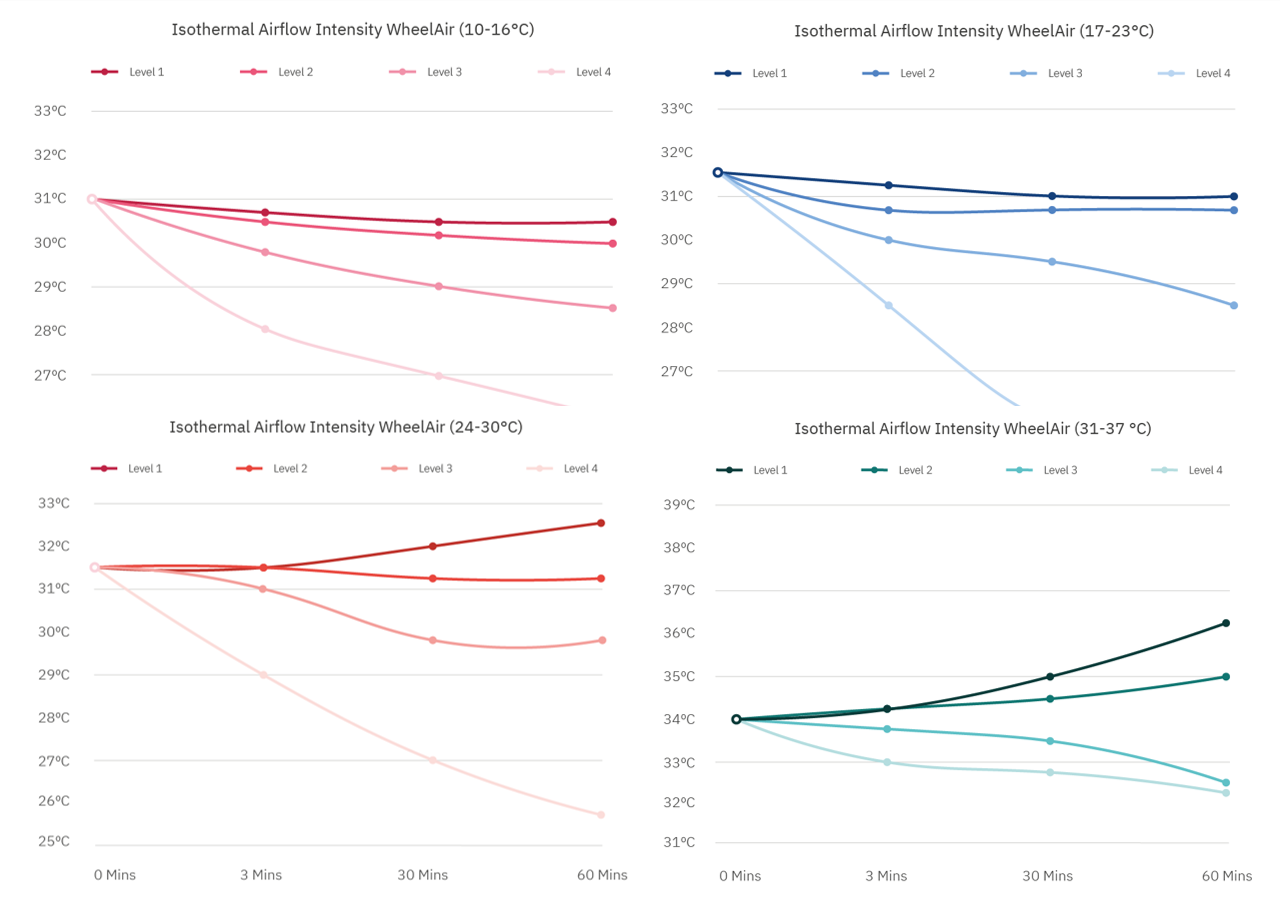
By addressing all components of skin integrity management the products offer the highest degree of skin protection available on the market. In contradiction to Phase Change Materials such as the Cyro cushion, WheelAir provides 24h care.

